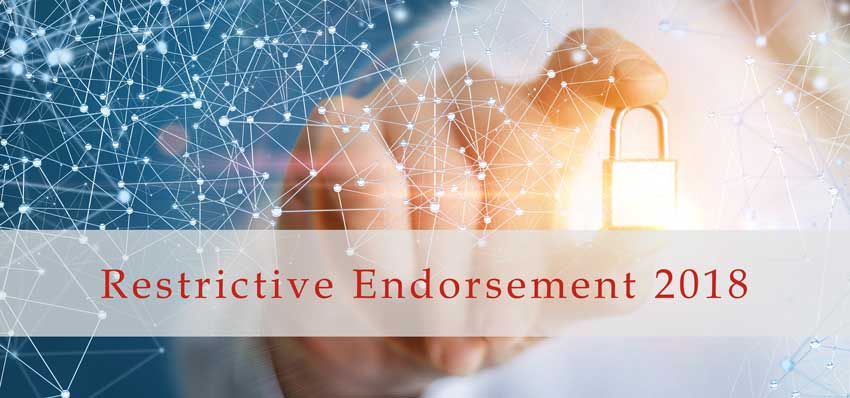Remote deposit capture including mobile deposit, many would say, has led to a mini-revival of check payments, or at least staved-off further declines due to the convenience it provides. But convenience often provides gaps that can be exploited by criminals and remote deposit is no exception. The banking community has been working hard to reduce the potential for fraud and come July 2018, a new “penalty” will be enacted that will force banks offering remote deposit services to scramble in order to cover their assets.
Changes in Regulation
While there are many changes to the regulation known as Reg CC, the one that has drawn a lot of attention is the transition of liability of fraudulent multiple deposits of a single check from the depository bank to the bank operating the RDC service that originally accepted the check. Essentially this is an incentive to implement what is known as “restrictive endorsement.”
Restrictive endorsement involves requiring the person or business depositing the check remotely to write a specific phrase such as “e-deposited” on the backside along with the endorsement itself. In doing so, it acts as a watermark of sorts that would prevent the original check from being deposited a second time at another bank. Each bank would have its own restrictive endorsement so that it could detect if the deposit is valid.
Restrictive Endorsement & the Technology Behind It
Restrictive endorsement obviously requires solid technology behind it. In addition to detecting the presence of a signature, financial institutions will also need to implement technology to detect presence of the restrictive endorsement phrase as well as the ability to validate it – whether machine printed or handwritten. If the check lacks the required information, it can be rejected, thereby, eliminating the chance of liability as well as removing the opportunity to commit fraud.
While many banks have not implemented this capability, there are those that have led the charge and have been using restrictive endorsement for several years now. Parascript’s financial solutions partners have enabled many financial institutions with this capability, using our time-tested handwriting and handprint technology popular in the financial services arena. Combined with other fraud prevention capabilities such as signature presence and verification, and check-stock analysis, financial institutions can significantly reduce the chance for check fraud.
Learn more about Parascript Fraud Prevention technology solutions here.




